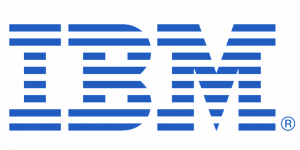It’s common for tech business founders to postpone addressing their tech brand identity, often thinking about it only after their first pitch to investors. People working in technology might find dealing with tech brand identity, design, and mood boards uncomfortable because they can seem abstract and distant from engineering. Yet, no technological or otherwise brand has become successful without a solid identity. If you delay forming your brand’s image, it will shape itself, and you probably won’t like the results.
Why you need a tech brand identity
A tech brand identity is a collection of visual and conceptual elements that create a unique image and identity for the brand in the target audience’s minds. It includes components such as:
Logo
A visual symbol representing the brand, should be recognizable and reflect the company’s essence. For instance, NASA’s logo features the earth, stars, an orbit, and a rocket wing, directly related to the agency’s work. IBM’s logo with eight blue stripes can represent computer essence, resembling lines of code or a punch card.


Color Palette
A set of colors used in all brand materials, evoking associations with the brand and enhancing its perception. Associative colors are chosen based on context, the product, or can be imposed. For instance, green is often used for battery-related tech due to the full-charge indicator’s color.
Fonts
Typography used in logos, websites, documents, and marketing materials. Fonts can convey the brand’s mood, whether formal, playful, or relaxed.
Icons
Special icons and graphic elements used in digital products and brand materials, adding emphasis to the brand’s tone.
Brand Voice
The style and tone of communication, which can be humorous or strictly official, shaping the interaction with the audience.
Mission and Values
The foundational principles and goals that drive the company, should be reflected in the brand’s visual identity.
Unique Selling Proposition (USP)
The offer that differentiates the brand from competitors and makes it unique.
Visual Style
The overall design and visual techniques used across all brand materials, from packaging to web design and ad campaigns.
A strong tech brand identity helps create a memorable image, establish an emotional connection with the audience, and increase customer loyalty. It also shapes how the audience perceives your brand. For instance, if you and a competitor both develop calorie-counting mobile apps, but your competitor uses imagery of overweight people and a harsh tone, while you use happy images and a supportive tone, the audience will split based on their preferences, despite the apps being similar.
Can you do without tech brand identity?
Whether you like it or not, as soon as people start learning about your company, a tech brand identity begins to form. You either shape your brand’s perception, or your audience does it for you, creating the risk of attaching undesirable meanings to your brand.
For example, the taxi service Uklon entered the Ukrainian market in the 2010s without a clear identity, and customers initially perceived it as a “clone of Uber” or even worse, “tax evasion” due to phonetic similarity. Until Uklon established its communication system and conveyed the message that they would always find a car faster than other taxi services, the audience was left with those unfavorable associations.
Failing to manage your tech brand identity can lead to wasted time and, in the worst case, a complete market failure. So, let’s explore how to develop a tech brand identity step-by-step.
Mood board for tech brand identity and how to create one
The first tool to understand how your brand should look, sound, and feel is a mood board. In the context of tech brand identity, a mood board is a visual tool that helps gather and organize visual and conceptual elements reflecting the brand’s identity and atmosphere. It serves as a source of inspiration and direction for designers and marketers when developing branding elements like logos, color palettes, typography, icons, and other visual elements.
To create a mood board for tech brand identity:
Define the goals and audience of your brand
- Determine what you want to convey with your brand (reliability, innovation, simplicity, etc.).
- Identify the target audience (age, gender, interests, professional activities).
Gather visual and conceptual elements of your tech brand identity
- Select main and additional colors that reflect your brand’s character.
- Choose fonts that fit your brand’s style.
- Find images that are associated with your brand’s field and goals.
- Select icons and other graphic elements for your branding.
Look critically at the visual environment familiar to your target audience. For instance, if you’re developing a drone for farmers to help monitor their crops, you should include photos of real farms, especially the machinery used there, on your mood board. Gather plenty of such photos to understand which colors and shapes prevail. For instance, an abundance of metal and neon lights is not typical for a farm, but farmers are used to reliable, heavy-duty equipment. This will help you realize that the drone should look sturdy and simple, just like the app used to control it.
Arrange these visual elements on a physical board or use a digital tool like Canva. Refine your mood board until all elements create a harmonious and coherent combination.
Music as part of tech brand identity
If you plan to use videos in your marketing materials (that is highly beneficial for tech products), include music in your brand identity. While many tech companies use corporate music, characterized by a positive, motivating atmosphere, you can go beyond this and choose a unique musical style.
How to test the effectiveness of tech brand identity
Testing the effectiveness of your tech brand identity starts with understanding how your target audience perceives your company. Conduct surveys and focus groups to see if your brand aligns with the values and ideas you aim to convey. Knowing how well your brand is recognized and whether it evokes positive emotions is crucial. This feedback helps identify weaknesses and areas for improvement.
Next, analyze digital metrics and online engagement. Track social media activity, website traffic, and user engagement levels. Tools like Google Analytics can show user behavior on your site, time spent on pages, and conversion rates. High engagement and positive feedback indicate a strong brand resonance.
Finally, compare your brand with competitors and monitor industry trends. This helps determine how your brand stands out and meets market expectations. Internal feedback from employees and partners ensures brand consistency and effectiveness across all aspects. Regular assessments and adjustments help maintain a strong and recognizable tech brand identity.
At JetSoftPro, we are happy to assist you in developing your tech brand identity. Our professional marketing team has extensive experience in this field.

